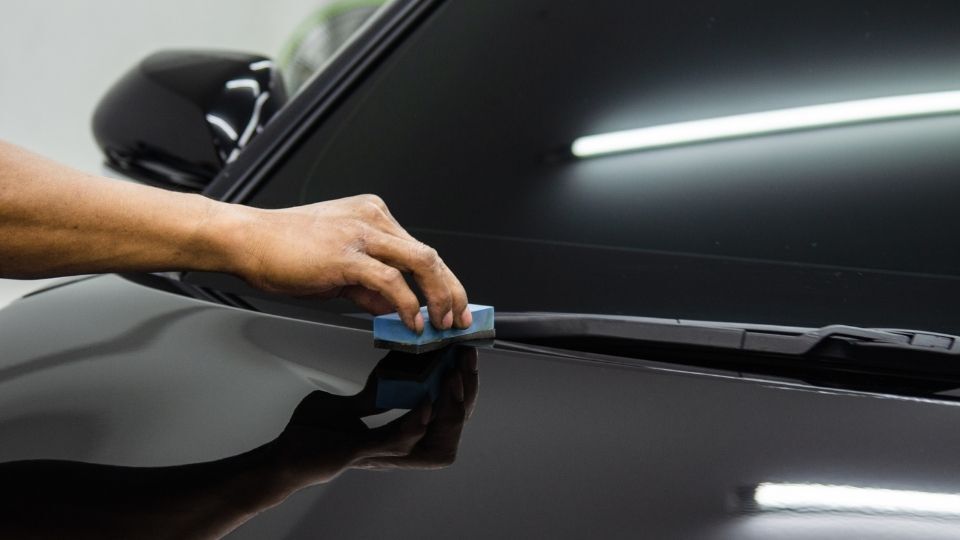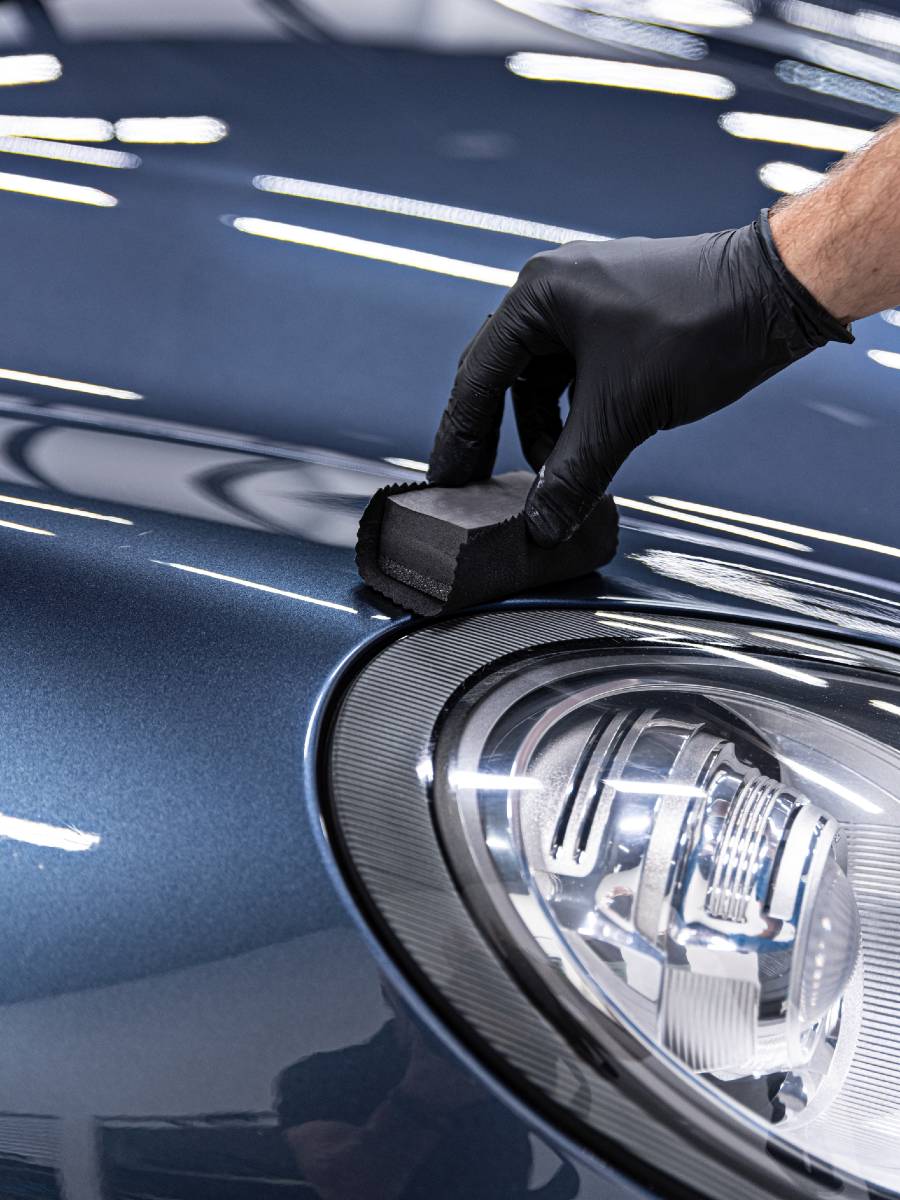Ceramic Finishing vs. Conventional Wax: Which Gives Better Long-Term Protection?
The debate between ceramic layers and typical wax for car defense has gathered considerable attention amongst vehicle fanatics and specialists alike. While both satisfy of securing paint, their distinctions in toughness, application, and long-lasting upkeep prices may affect a customer's choice. Ceramic layers boast exceptional durability and resistance to environmental elements, yet the intricacy of their application questions regarding accessibility and usefulness. As we check out these contrasting alternatives, it becomes essential to take into consideration not just the instant advantages but likewise the effects for lorry care over time.
Summary of Ceramic Layer
Ceramic coating has actually gained significant popularity amongst automotive fanatics and detailers alike as a result of its innovative safety top qualities. This cutting-edge modern technology is made to create a durable, hydrophobic guard over a vehicle's paint surface area, significantly improving its resistance to environmental impurities such as dirt, UV rays, and chemical stains. Unlike traditional wax, which provides a momentary layer of security, ceramic coverings bond at a molecular degree with the paint, offering long-lasting sturdiness-- typically prolonging past two years with proper maintenance.
The application procedure includes careful prep work of the automobile's surface area, consisting of cleansing and polishing to ensure optimum adhesion. As soon as applied, the finish treatments to create a robust layer that not only includes depth and gloss to the paint however also simplifies upkeep. With its hydrophobic buildings, ceramic finish enables water and dirt to glide off more conveniently, minimizing the frequency of washes and lessening the danger of swirl marks.
Additionally, ceramic finishes are available in different formulas, permitting users to choose products customized to their particular demands and preferences. In general, ceramic coating represents a significant advancement in paint security technology, delivering premium efficiency contrasted to traditional options.
Review of Typical Wax
Generally considered as a staple in automotive treatment, wax acts as a preferred choice for those looking for a simple technique to improve and shield their vehicle's paint - ceramic coating. Automotive wax typically consists of natural active ingredients, such as carnauba, or artificial substances, developed to develop a protective layer externally of the paint. This layer not just improves the automobile's gloss and shine but likewise provides an obstacle versus ecological impurities
The application of wax is normally straightforward, making it available for both specialists and DIY enthusiasts. It can be used by hand or equipment, allowing for adaptability in the describing process. As soon as used, wax calls for a healing duration, after which it hardens to form a safety shell. Wax is also known for its capacity to ward off water, promoting a beading effect that assists in the prevention of water areas and rust.
Nonetheless, while wax works for boosting the visual charm of a car, it is essential to keep in mind that the protection it uses might necessitate extra constant reapplication compared to alternative items, such as ceramic finishes. In general, typical wax stays a preferred option for those focusing on convenience of usage and immediate visual renovation.
Sturdiness and Long Life Contrast
While both ceramic finishes and typical wax deal protective benefits for automobile paint, their sturdiness and longevity vary significantly. Traditional wax, normally made from all-natural link carnauba or artificial polymers, typically supplies a protective layer that lasts around three to six months. This reasonably brief lifespan necessitates normal reapplication to maintain optimum protection.
In comparison, ceramic layers are crafted from innovative nanotechnology, creating a covalent bond with the paint surface area. This leads to a durable, hydrophobic layer that can withstand for two to 5 years, depending upon the product and environmental problems. The premium toughness of ceramic coatings is associated to their chemical structure, which offers enhanced resistance to scratches, UV rays, and oxidation.

Defense Against Ecological Factors
Safeguarding a vehicle's paint from ecological variables is important for maintaining its look and value in time. Autos are regularly subjected to a range of components, including UV rays, bird droppings, tree sap, acid rain, and road gunk, every one of which can endanger the stability of the paintwork.
Ceramic finishings supply a durable defense versus these ecological assailants. Unlike traditional wax, which can deteriorate quickly under UV direct exposure, ceramic coatings develop a check over here long lasting, hydrophobic layer that resists the damaging effects of sunshine and toxic wastes. This innovative innovation produces a chemical bond with the vehicle's surface area, using premium defense that lasts for several years, also in harsh problems.
Traditional wax, while much easier to use, commonly needs constant reapplication and provides restricted resistance to impurities and UV rays. Gradually, it can damage down, leaving the paint prone to scrapes and oxidation. On the other hand, ceramic layers keep their safety qualities longer, dramatically reducing the risk of paint damages and making sure that the car preserves its aesthetic allure. Consequently, ceramic layers are increasingly acknowledged as the remarkable choice for long-term defense against environmental variables.
Application and Maintenance Differences
The techniques of application and subsequent maintenance for ceramic finishes and conventional wax vary substantially, influencing the total individual experience and effectiveness of each item. Ceramic coatings need an even more complex application procedure, typically involving surface area preparation that consists of cleaning, decontaminating, and brightening the lorry. As soon as the surface prepares, the ceramic coating is used in a controlled environment, typically needing professional experience to make certain appropriate treating and bonding to the paint.

While both items enhance vehicle look, the longer-lasting defense supplied by ceramic finishings may justify their preliminary financial investment, despite the even more requiring have a peek at this website application process. On the other hand, conventional wax continues to be a popular option for those looking for an easier, albeit short-term, service.

Final Thought
To conclude, ceramic finishes demonstrate significant benefits over traditional wax in regards to durability and environmental management. With a life expectancy prolonging two to 5 years and superior resistance to UV rays, dust, and chemical discolorations, ceramic layers provide a more efficient remedy for lasting automobile maintenance. Although the application process might require specialist knowledge, the resulting expense financial savings and reduced frequency of reapplication emphasize the worth of ceramic layers for those looking for optimal vehicle security.
The discussion between ceramic layers and standard wax for automobile defense has amassed considerable interest amongst automobile enthusiasts and professionals alike. Unlike conventional wax, which gives a temporary layer of protection, ceramic coverings bond at a molecular degree with the paint, using durable sturdiness-- often prolonging beyond two years with proper maintenance.
While both ceramic layers and conventional wax deal safety benefits for automobile paint, their durability and long life vary considerably. For cars and truck fanatics seeking lasting defense, ceramic coverings present an engaging advantage over typical wax items.
In conclusion, ceramic finishings show considerable advantages over conventional wax in terms of longevity and environmental security.